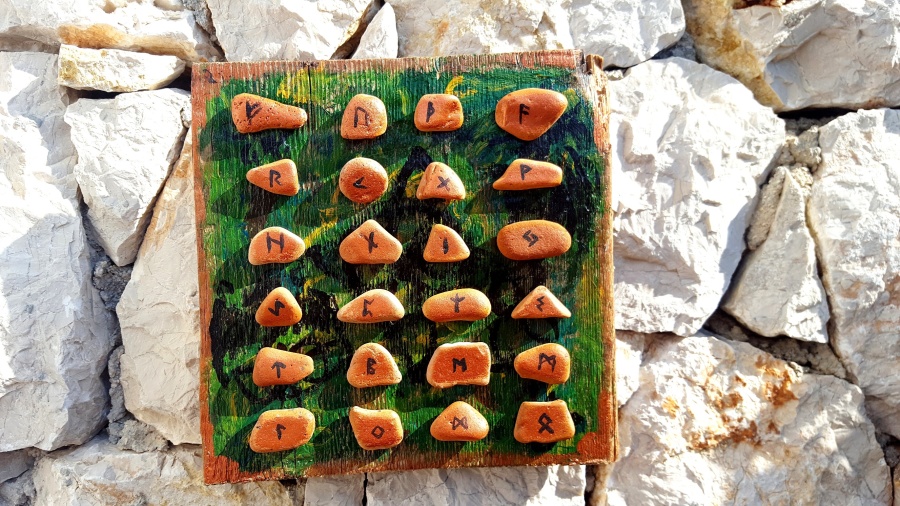
Most Runic texts are found on hard surfaces such as rock, wood, and metal, and this might explain its angular shape. Because of the resemblance to Mediterranean scripts, it is very likely that Futhark was adapted from either the Greek or Etruscan alphabet. Even though the earliest Runic inscriptions are from the 3rd century CE, its origin may lie much deeper in the pre-history of Northern Europe. …
The Futhark of 24 letters is called “Elder Futhark”, and was used mostly before the 9th century CE. But as languages changed and more Germanic groups adopted it, Futhark changed as well to suit the language that it came to write.
Source: Ancientscripts.com
I spent this summer at the seaside as usual, on the Island of Pag , at Croatian Adriatic sea. I’ve been collecting pieces of driftwood, pebbles, sea shells and other items modeled and shaped by the nature.
As the civilization gradually infiltrates into every bit of this planet, thus the construction sites invades the shore. But the sea is the builder, the sculptor and the destroyer, so it takes from the land into its depths then returns something scared, changed but beautiful. Walking down one of this deserted construction sites by the sea, I found pieces of planks, and bricks and roof tiles. But most interesting were those tiles fragments, modeled and rounded by the sea, looking like little pebbles. Sea made contemporary everyday objects look like ancient pieces. I wanted to make something with them, something that has an air of history.
So I thought of runes…







